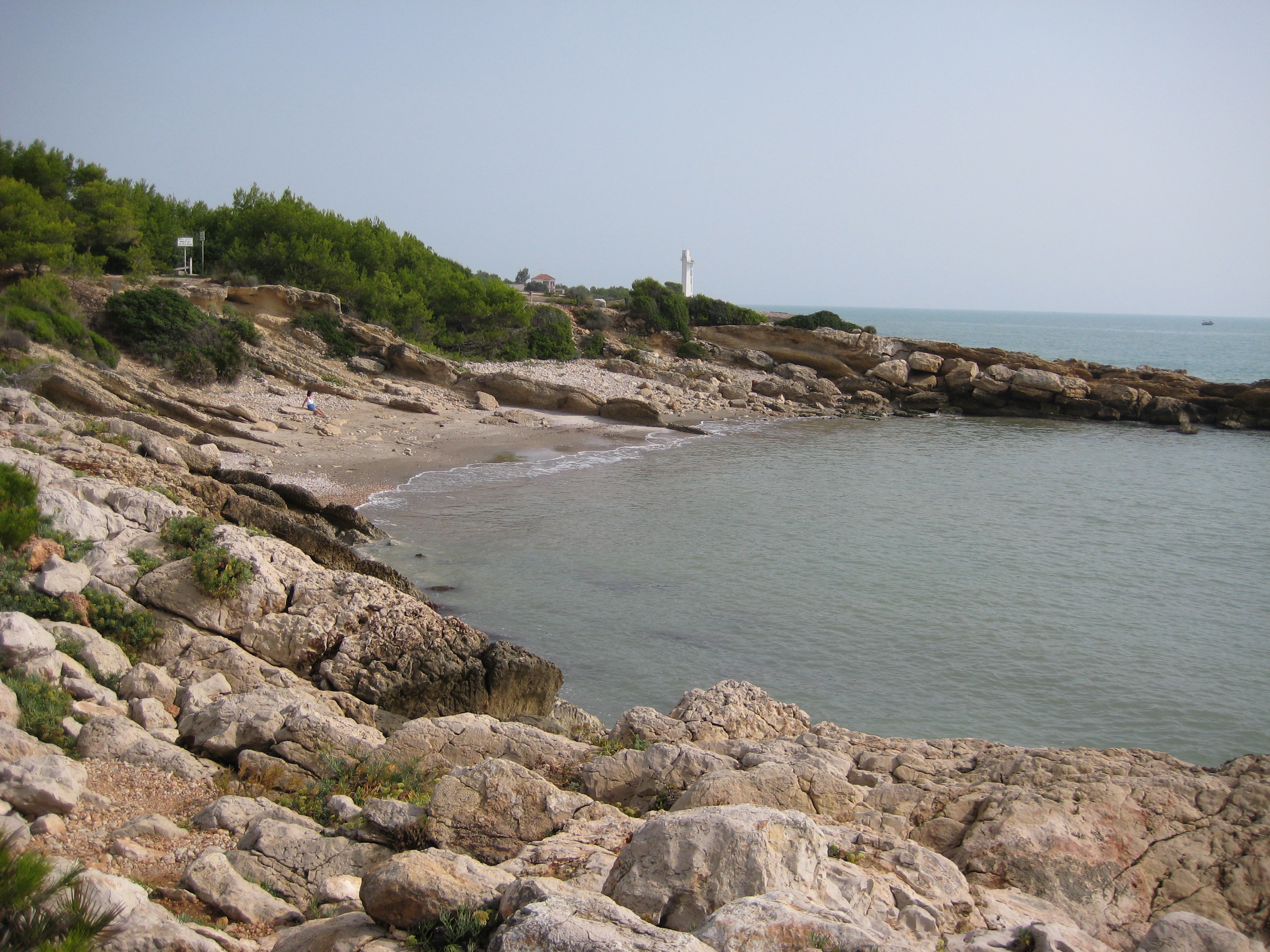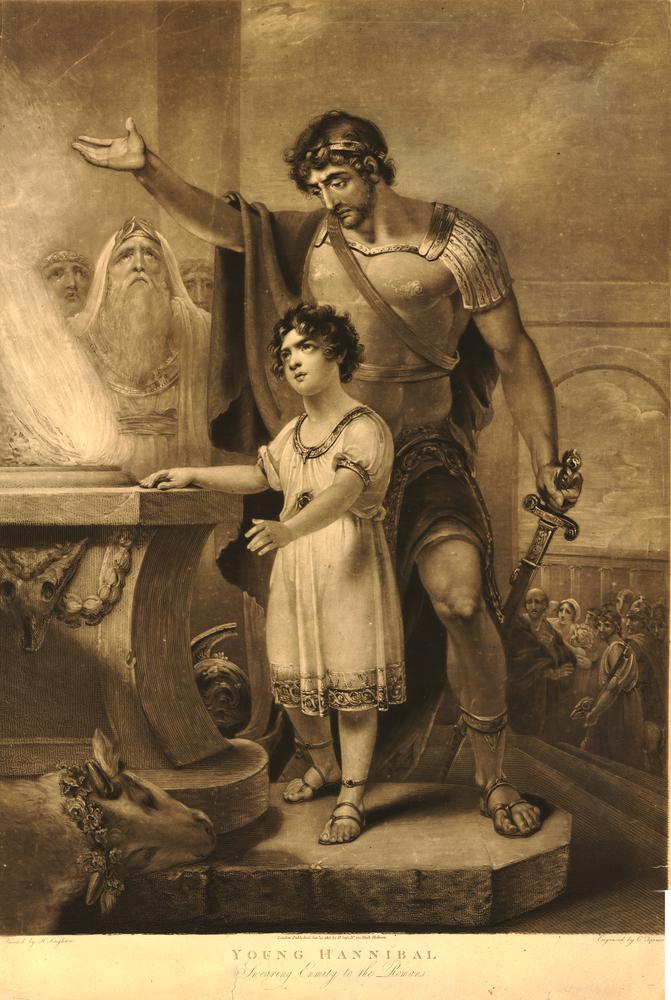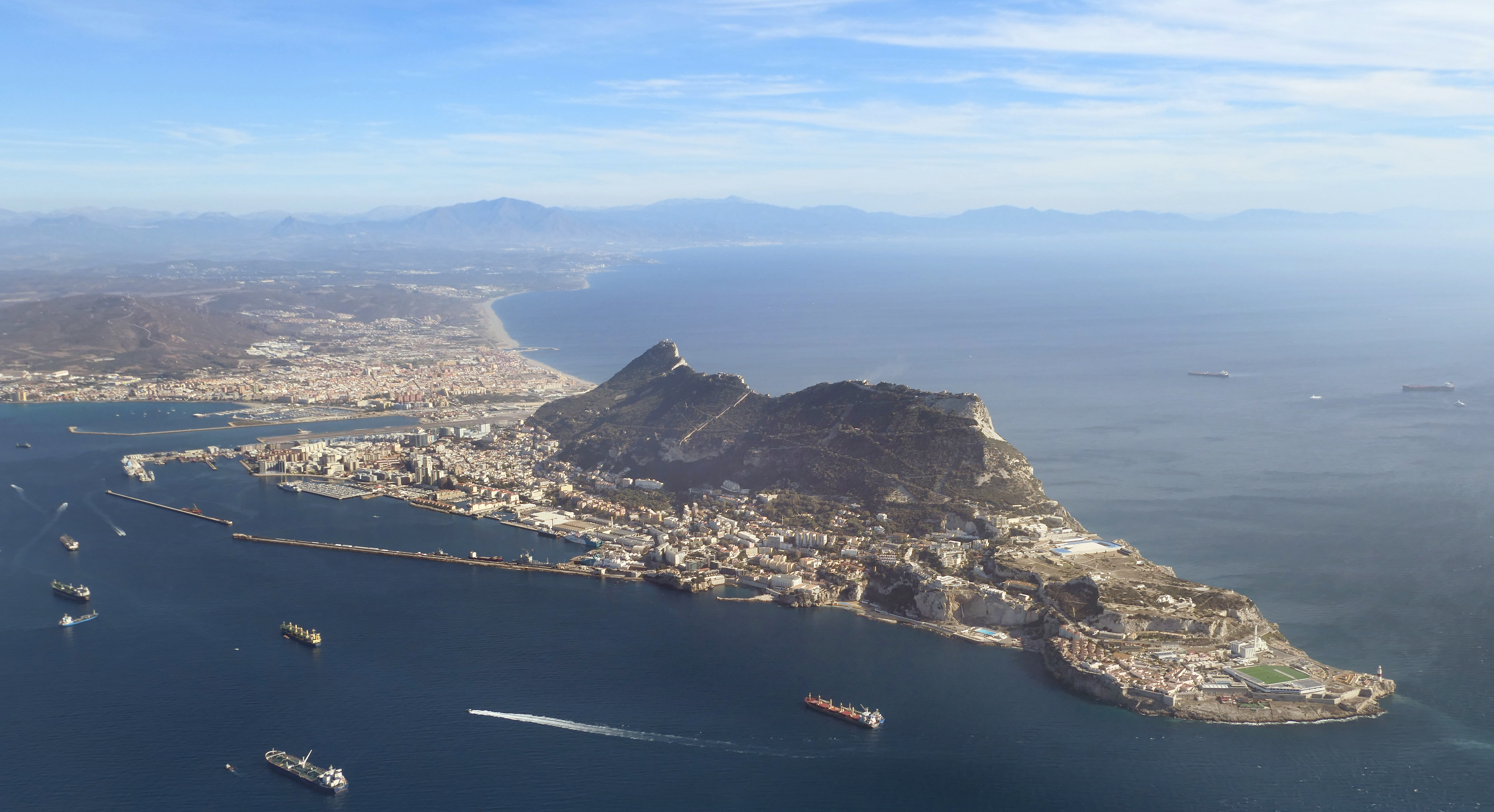|
Peñíscola
Peníscola () or Peñíscola (), anglicised as Peniscola, is a municipality in the Province of Castellón, Valencian Community, Spain. The town is located on the Costa del Azahar, north of the Serra d'Irta along the Mediterranean coast. It is a popular tourist destination. History Peniscola, often called the " Gibraltar of Valencia", and locally as "The City in the Sea", is a fortified seaport, with a lighthouse, built on a rocky headland about 220 feet (67 m) high, and joined to the mainland by only a narrow strip of land (tombolo). ''Peníscola'' is a local evolution of Latin ''peninsula''. The history of the place goes back to the Iberians. Later the town became Phoenician, named ''Tyreche'', then Greek, under the name ''Chersonesos'' (meaning "peninsula"). It was next captured by the Carthaginians under Hamilcar Barca; legend has it that this is the place where he made his son Hannibal swear an oath that he would never be a friend of Rome. The present castle was built b ... [...More Info...] [...Related Items...] OR: [Wikipedia] [Google] [Baidu] |
Valencia (autonomous Community)
The Valencian Community ( ca-valencia, Comunitat Valenciana, es, Comunidad Valenciana) is an autonomous community of Spain. It is the fourth most populous Spanish autonomous community after Andalusia, Catalonia and the Community of Madrid with more than five million inhabitants.Instituto Nacional de Estadística, Madrid, 2020. Its homonymous capital Valencia is the third largest city and metropolitan area in Spain. It is located along the Mediterranean coast on the east side of the Iberian Peninsula. It borders with Catalonia to the north, Aragon and Castilla–La Mancha to the west, and Murcia to the south, and the Balearic Islands are to its east. The Valencian Community consists of three provinces which are Castellón, Valencia and Alicante. According to Valencia's Statute of Autonomy, the Valencian people are a ''nationality''. Their origins date back to the 1238 Aragonese conquest of the Taifa of Valencia. The newly-founded Kingdom of Valencia enjoyed its own legal entit ... [...More Info...] [...Related Items...] OR: [Wikipedia] [Google] [Baidu] |
Valencian Community
The Valencian Community ( ca-valencia, Comunitat Valenciana, es, Comunidad Valenciana) is an Autonomous communities of Spain, autonomous community of Spain. It is the fourth most populous Spanish Autonomous communities of Spain, autonomous community after Andalusia, Catalonia and the Community of Madrid with more than five million inhabitants.Instituto Nacional de Estadística, Madrid, 2020. Its homonymous capital Valencia is the third largest city and metropolitan area in Spain. It is located along the Mediterranean Sea, Mediterranean coast on the east side of the Iberian Peninsula. It borders with Catalonia to the north, Aragon and Castilla–La Mancha to the west, and Region of Murcia, Murcia to the south, and the Balearic Islands are to its east. The Valencian Community consists of three Provinces of Spain, provinces which are province of Castellón, Castellón, province of Valencia, Valencia and province of Alicante, Alicante. According to Valencia's Statute of Autonomy, th ... [...More Info...] [...Related Items...] OR: [Wikipedia] [Google] [Baidu] |
Serra D'Irta
Serra d'Irta (, es, Sierra de Irta) is an 18.8 km long mountain range in the Baix Maestrat comarca, Valencian Community, Spain. Its highest point is Pico Campanelles (573 m). Location The Serra d'Irta stretches in a northeast-southwest direction south of the Vinaròs plain, its northern limit. It is located right by the Mediterranean coastline, rising on the eastern side of the road between Barcelona and Valencia. Its southern limit is near Alcossebre. This mountain range is covered with Maquis shrubland, including '' Juniperus oxycedrus'', '' Calicotome spinosa'', ''Pistacia lentiscus'' and ''Anthyllis cytisoides'' shrubs. Some of the lower slopes facing inland are planted with olive, almond and carob trees. In spite of the mountain area having been officially declared a Natural Park, there has been heavy urbanization on the slopes of the mountain having a sea view towards the northern end of the range next to Peníscola. There are castles and watchtowers of ... [...More Info...] [...Related Items...] OR: [Wikipedia] [Google] [Baidu] |
Baix Maestrat
Baix Maestrat (; es, Bajo Maestrazgo ) is a coastal ''comarca'' located in the north of the province of Castellón, Valencian Community, Spain. The capital of the ''comarca'' is Vinaròs. Municipalities The ''comarca'' is composed of 18 municipalities, listed below with their surface areas, their populations at the 2011 Census and according to the latest official estimates (for i January 2019) and their population density in 2019: Data from National Institute of Statistics 2019 Geography The ''comarca'' borders to the north-west with the province of Teruel (Aragon), to the north-east with the province of Tarragona (Catalonia), to the east with the Mediterranean Sea, to the south with the ''comarca'' of Plana Alta ( Castellón, Valencia) and to the west with the ''comarcas'' of Alt Maestrat ( Castellón, Valencia) and Els Ports ( Castellón, Valencia). Within the ''comarca'' lies Serra d'Irta, an 18.8 km long mountain range and the largest undeveloped coastal a ... [...More Info...] [...Related Items...] OR: [Wikipedia] [Google] [Baidu] |
Hannibal
Hannibal (; xpu, 𐤇𐤍𐤁𐤏𐤋, ''Ḥannibaʿl''; 247 – between 183 and 181 BC) was a Carthaginian general and statesman who commanded the forces of Carthage in their battle against the Roman Republic during the Second Punic War. He is widely regarded as one of the greatest military commanders in history. Hannibal's father, Hamilcar Barca, was a leading Carthaginian general during the First Punic War. His younger brothers were Mago and Hasdrubal; his brother-in-law was Hasdrubal the Fair, who commanded other Carthaginian armies. Hannibal lived during a period of great tension in the Mediterranean Basin, triggered by the emergence of the Roman Republic as a great power with its defeat of Carthage in the First Punic War. Revanchism prevailed in Carthage, symbolized by the pledge that Hannibal made to his father to "never be a friend of Rome". In 218 BC, Hannibal attacked Saguntum (modern Sagunto, Spain), an ally of Rome, in Hispania, sparking the Sec ... [...More Info...] [...Related Items...] OR: [Wikipedia] [Google] [Baidu] |
Costa Del Azahar
Costa del Azahar (, literally in English "Orange Blossom Coast") or Costa dels Tarongers (, literally in English: Orange Tree Coast) is the name for the coast of the province of Castellón in Spain, from Vinaròs to Almenara. Towns on the Costa del Azahar include PeñíscolaBenicarló Oropesa del Mar, Benicàssim and Castellón de la Plana. References * 'Guide to yacht clubs and marinas in Spain : Costa Blanca The Costa Blanca (, , literally meaning "White Coast") is over of Mediterranean coastline in the Alicante province, on the southeastern coast of Spain. It extends from the town of Dénia in the north, beyond which lies the Costa del Azahar (or ..., Costa del Azahar, Islas Baleares' (Madrid: Ministry of Transportation, Tourism and Communications, General Office of the Secretary of Tourism, General Office of Tourism Companies and Activities, 1987) Azahar Landforms of the Valencian Community {{valencia-geo-stub ... [...More Info...] [...Related Items...] OR: [Wikipedia] [Google] [Baidu] |
Order Of Montesa
The Order of Montesa ( va, Ordre de Montesa, Aragonese and es, Orden de Montesa) is a Christian military order, territorially limited to the old Crown of Aragon. It was named after the castle of Montesa, its headquarters. Templar background The Knights Templar had been received with enthusiasm within the Crown of Aragon from their foundation in 1128. King Alfonso I of Aragon, having no direct heir, bequeathed his dominions to be divided among the Knights Templar, the Knights Hospitaller, and the Order of the Holy Sepulchre, but this bequest was annulled by his subjects in 1131. The Knights Templar had to be contented with certain castles, the chief of which was Monzón. Although the Aragonese branch of the order was pronounced innocent at the famous trial of the Templars, Pope Clement V's Bull of suppression was applied to them in spite of the protests of King James II of Aragon in 1312. Establishment of new order King James II persuaded Pope John XXII to permit him to regr ... [...More Info...] [...Related Items...] OR: [Wikipedia] [Google] [Baidu] |
Knights Templar
The Poor Fellow-Soldiers of Christ and of the Temple of Solomon ( la, Pauperes commilitones Christi Templique Salomonici), also known as the Order of Solomon's Temple, the Knights Templar, or simply the Templars, was a Catholic military order, one of the most wealthy and popular military orders in Western Christianity. They were founded in 1119, headquartered on the Temple Mount in Jerusalem, and existed for nearly two centuries during the Middle Ages. Officially endorsed by the Roman Catholic Church by such decrees as the papal bull '' Omne datum optimum'' of Pope Innocent II, the Templars became a favored charity throughout Christendom and grew rapidly in membership and power. Templar knights, in their distinctive white mantles with a red cross, were amongst the most skilled fighting units of the Crusades. They were prominent in Christian finance; non-combatant members of the order, who made up as much as 90% of their members, managed a large economic infrastructure throu ... [...More Info...] [...Related Items...] OR: [Wikipedia] [Google] [Baidu] |
Hamilcar Barca
Hamilcar Barca or Barcas ( xpu, 𐤇𐤌𐤋𐤒𐤓𐤕𐤟𐤁𐤓𐤒, ''Ḥomilqart Baraq''; –228BC) was a Carthaginian general and statesman, leader of the Barcid family, and father of Hannibal, Hasdrubal and Mago. He was also father-in-law to Hasdrubal the Fair. Hamilcar commanded the Carthaginian land forces in Sicily from 247BC to 241BC, during the latter stages of the First Punic War. He kept his army intact and led a successful guerrilla war against the Romans in Sicily. Hamilcar retired to Carthage after the peace treaty in 241BC, following the defeat of Carthage. When the Mercenary War burst out in 239BC, Hamilcar was recalled to command and was instrumental in concluding that conflict successfully. Hamilcar commanded the Carthaginian expedition to Spain in 237BC, and for eight years expanded the territory of Carthage in Spain before dying in battle in 228 BC. He may have been responsible for creating the strategy which his son Hannibal implemented in the Second ... [...More Info...] [...Related Items...] OR: [Wikipedia] [Google] [Baidu] |
Gibraltar
) , anthem = " God Save the King" , song = " Gibraltar Anthem" , image_map = Gibraltar location in Europe.svg , map_alt = Location of Gibraltar in Europe , map_caption = United Kingdom shown in pale green , mapsize = , image_map2 = Gibraltar map-en-edit2.svg , map_alt2 = Map of Gibraltar , map_caption2 = Map of Gibraltar , mapsize2 = , subdivision_type = Sovereign state , subdivision_name = , established_title = British capture , established_date = 4 August 1704 , established_title2 = , established_date2 = 11 April 1713 , established_title3 = National Day , established_date3 = 10 September 1967 , established_title4 = Accession to EEC , established_date4 = 1 January 1973 , established_title5 = Withdrawal from the EU , established_date5 = 31 January 2020 , official_languages = English , languages_type = Spoken languages , languages = , capital = Westside, Gibraltar (de facto) , coordinates = , largest_settlement_type = largest district , larg ... [...More Info...] [...Related Items...] OR: [Wikipedia] [Google] [Baidu] |
Greek Colony
Greek colonization was an organised Colonies in antiquity, colonial expansion by the Archaic Greece, Archaic Greeks into the Mediterranean Sea and Black Sea in the period of the 8th–6th centuries BC. This colonization differed from the Iron Age Greek migrations, migrations of the Greek Dark Ages in that it consisted of organised direction (see Oikistes) by the originating Metropolis#Etymology and modern usage, metropolis instead of the simple movement of tribes which characterized the earlier migrations. Many colonies () that were founded in this period evolved into strong Greek city-states, city-states and became independent of their metropolis. Reasons for colonization Reasons for colonization had to do with the demographic explosion of this period, the development of the Emporium (antiquity), emporium, the need for a secure supply of raw materials, but also with the emerging politics of the period that drove sections of the population into exile. Population growth created ... [...More Info...] [...Related Items...] OR: [Wikipedia] [Google] [Baidu] |
Phoenician Colony
Colonies in antiquity were post-Iron Age city-states founded from a mother-city (its "metropolis"), not from a territory-at-large. Bonds between a colony and its metropolis remained often close, and took specific forms during the period of classical antiquity. Generally, colonies founded by the ancient Phoenicians, Carthage, Rome, Alexander the Great and his successors remained tied to their metropolis, but Greek colonies of the Archaic and Classical eras were sovereign and self-governing from their inception. While Greek colonies were often founded to solve social unrest in the mother-city, by expelling a part of the population, Hellenistic, Roman, Carthaginian, and Han Chinese colonies were used for trade, expansion and empire-building. Egyptian colony Egyptian settlement and colonisation is attested from about 3200 BC onward all over the area of southern Canaan with almost every type of artifact: architecture (fortifications, embankments and buildings), pottery, vessels, to ... [...More Info...] [...Related Items...] OR: [Wikipedia] [Google] [Baidu] |




